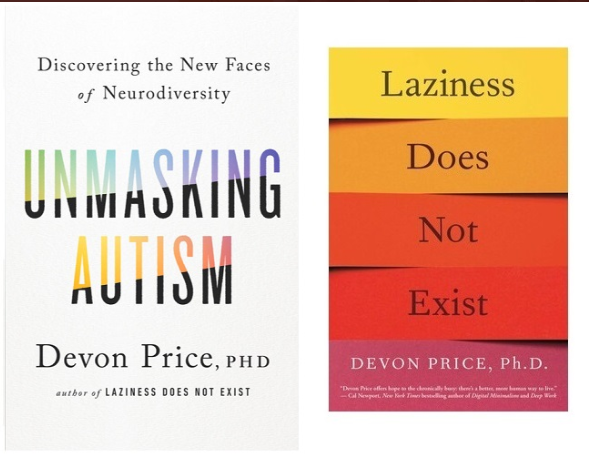Understanding the Interconnection of Thoughts and Feelings
Written on
In the realm of therapy, you may have come across the phrase “thoughts are not feelings.” This notion is often aimed at assisting clients in differentiating between their perceptions of situations and their emotional responses. For instance, in Sheri Van Dijk's Dialectical Behavioral Therapy Workbook for Bipolar Disorder, she highlights the common struggle individuals face in distinguishing between thoughts and emotions.
When asked about their feelings in a given situation, individuals might respond with statements like, “I felt criticized” or “I felt misunderstood.” These responses reflect their thoughts rather than their true emotional experiences. Van Dijk points out that beneath these thoughts, a person might be feeling anger or disappointment regarding their treatment. This illustrates the complexity of recognizing the difference between thought and emotion. Our feelings significantly influence our perceptions and interpretations of experiences, making it challenging to separate the two.
Conversely, our thoughts can also impact our emotional states. When we fixate on distressing subjects, we can exacerbate our feelings of sadness. If we habitually interpret others’ actions negatively, we may navigate life feeling judged and isolated. The interplay between emotions and thoughts is continuous and inseparable. Thus, why do we attempt to draw a line between the two? They are inherently intertwined.
The phrase “thoughts are not feelings” is often directed at patients who tend to overanalyze their emotions, particularly when therapists believe such analysis obstructs genuine emotional engagement. Reflecting on a past conversation with a therapist, I expressed my distress over a friend’s struggles with suicidal thoughts. Instead of empathizing, my therapist pointed out that my response was a thought, not an emotion. This feedback felt dismissive and invalidating, leading me to question the appropriateness of my emotional expression.
Therapists frequently urge patients to convey straightforward emotional terms like “happy,” “angry,” or “sad.” While I could articulate my sadness and guilt regarding my friends’ pain, the depth of my emotions felt inadequately captured by these terms. My emotional turmoil was profound, and my thoughts were steeped in anxiety and fear about my ability to help. Emotions are deeply embedded in our thoughts, and to disregard this connection overlooks a significant aspect of our inner experiences.
In cognitive-behavioral therapy (CBT), patients learn to identify cognitive distortions and evaluate their thoughts against reality. While emotions are acknowledged as valid, irrational thoughts are treated as obstacles to overcome. This approach can be difficult to apply because it’s nearly impossible to separate our thoughts from our feelings. How can one fully experience sadness without acknowledging the racing thoughts that accompany it? Neglecting this relationship means missing essential layers of emotional complexity.
Similarly, dialectical behavioral therapy (DBT) instructs clients to differentiate their thoughts from their emotions. Van Dijk’s workbook argues that a statement like “I’m an idiot!” is a thought, not a feeling. However, such a thought undoubtedly evokes a cascade of negative emotions. Simply stating one feels “ashamed” or “embarrassed” lacks the richness and context that a more specific thought conveys.
Therapists and self-help literature often emphasize the separation of thoughts and feelings because many individuals attempt to suppress unpleasant emotions through rationalization. For example, a colleague of mine named Brendon faced significant childhood stress but often minimized his trauma by focusing on the positive aspects of his upbringing. He engaged in motivated cognition to avoid confronting feelings like resentment.
This tendency to intellectualize emotions can lead to meta-emotions—feelings about our feelings. If a boy learns that expressing sadness is unacceptable, he might become angry with himself for feeling sad as an adult. This leads to a cycle of self-censorship where genuine emotions are buried under layers of guilt or shame.
Autistic individuals frequently navigate this intricate emotional landscape. We may struggle to identify and articulate our feelings, often because societal expectations dictate how we should express them. For instance, a young woman named Crystal described experiencing meltdowns when faced with unexpected changes, while another interviewee, Eric, shared how sensory overload could trigger his irritability.
These experiences teach Autistic individuals to distrust their feelings and instead engage in self-analysis to suppress “incorrect” emotions. This inability to recognize our emotions, termed alexithymia, manifests in various ways. Some may find it challenging to discern consent during intimate moments, while others might struggle to articulate their emotions during conflicts.
For me, significant events often leave me feeling numb, requiring time to process my emotions before I can express them. This approach is not uncommon among many Autistic individuals, who might grapple with the tension between their thoughts and feelings. When therapists assert that “thoughts are not feelings,” it can be profoundly invalidating and lead to feelings of self-doubt and confusion.
The therapeutic landscape often overlooks the nuances of Autistic emotional experiences. Many therapists, typically non-Autistic individuals, may misinterpret Autistic emotional expressions, leading to misunderstandings. Autistic individuals often communicate their feelings through intricate narratives and analogies, rather than conventional emotional expressions.
Ultimately, thoughts and feelings are interconnected, as are behaviors and communication. The outdated notion of Cartesian Dualism, which separates mind and body, fails to capture the reality of human psychology. We now understand that our thoughts and feelings are part of a cohesive whole, influenced by various internal and external factors. Everything is interconnected, and acknowledging this complexity is vital for a more comprehensive understanding of emotional and psychological health.
In conclusion, recognizing the intertwined nature of thoughts and feelings is crucial for effective therapy and personal understanding. I hope that therapists, particularly those who work with neurodivergent individuals, will embrace this holistic perspective.
